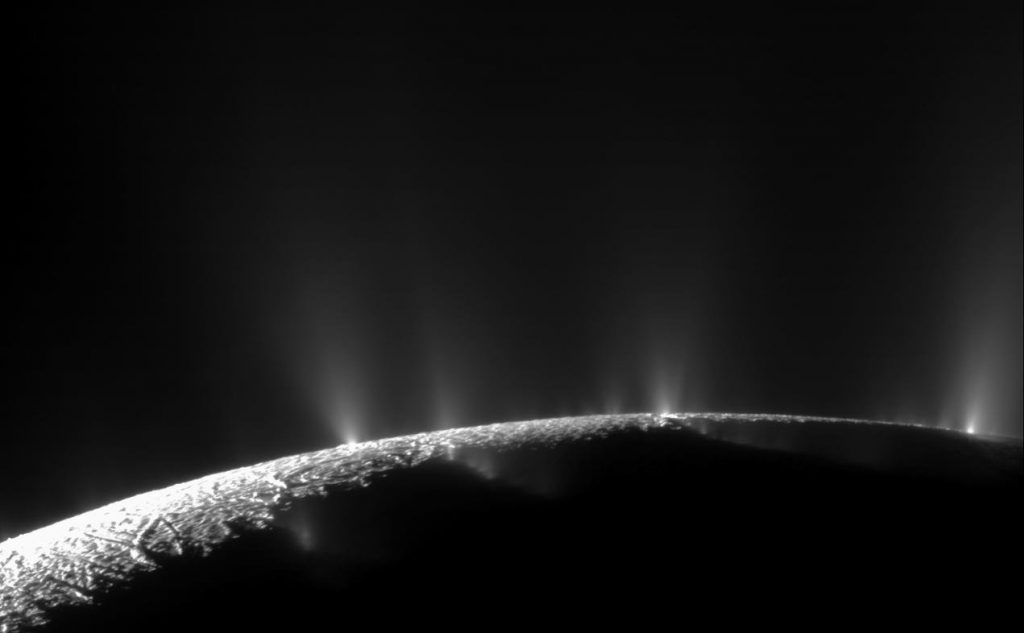
Phosphorus, a key chemical element for many biological processes, has been found in icy grains emitted by the small moon and is likely abundant in its subsurface ocean.
Using data collected by NASA’s Cassini mission, an international team of scientists including Tokyo Tech Earth-Life Science Institute researchers Yasuhito Sekine, Kento Furuya and Shuya Tan has discovered phosphorus – an essential chemical element for life – locked inside salt-rich ice grains ejected into space from Enceladus.
The small moon is known to possess a subsurface ocean, and water from that ocean erupts through cracks in Enceladus’ icy crust as geysers at its south pole, creating a plume. The plume then feeds Saturn’s E ring (a faint ring outside of the brighter main rings with icy particles.
During its mission at the gas giant from 2004 to 2017, Cassini flew through the plume and E ring numerous times. Scientists found that Enceladus’ ice grains contain a rich array of minerals and organic compounds – including the ingredients for amino acids – associated with life as we know it.
More information: https://www.titech.ac.jp/english/news/2023/067021
| Journal | Nature |
| Title of the paper | Detection of phosphates originating from Enceladus’s ocean |
| Authors | Frank Postberg1*, Yasuhito Sekine2,3, Fabian Klenner1, Christopher R. Glein4, Zenghui Zou1, Bernd Abel5,6, Kento Furuya2, Jon K. Hillier1, Nozair Khawaja1, Sascha Kempf7, Lenz Noelle1, Takuya Saito8, Juergen Schmidt1,9, Takazo Shibuya8, Ralf Srama10 & Shuya Tan2 |
| Affiliations | 1. Institut ür Geologische Wissenschaften, Freie Universität Berlin, Berlin, Germany. 2. Earth-Life Science Institute (ELSI), Tokyo Institute of Technology, Tokyo, Japan. 3. Institute of Nature and Environmental Technology, Kanazawa University, Ishikawa, Japan. 4. Space Science Division, Space Sector, Southwest Research Institute, San Antonio, TX, USA. 5. Leibniz-Institute für Oberflächenmodifizierung, Leipzig, Germany. 6. Institute of Chemical Technology, University of Leipzig, Leipzig, Germany. 7. Laboratory for Atmospheric and Space Physics (LASP), University of Colorado, Boulder, CO, USA. 8. Institute for Extra-cutting-edge Science and Technology Avantgarde Research (X-star), Japan Agency for Marine-Earth Science and Technology (JAMSTEC), Kanagawa, Japan. 9. Astronomy Research Unit, University of Oulu, Oulu, Finland. 10. Institut für Raumfahrtsysteme, Universität Stuttgart, Stuttgart, Germany. |
| DOI | 10.1038/s41586-023-05987-9 |
| Online published date | 14 June 2023 |
